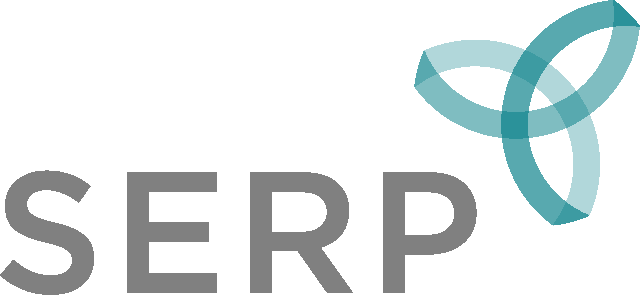CLEAR EXPECTATIONS
STRUCTURES, SUPPORT, AND RESOURCES
ORGANIZATION AND OPERATION OF THE DISTRICT
IMPROVING TEACHING AND LEARNING SYSTEM-WIDE
Ten Essential Actions
M. Suzanne Donovan
Strategic Education Research Partnership
Paul Cobb
Vanderbilt University
Kara Jackson
University of Washington
School systems have been given a herculean mission: to provide all children who arrive at their doors with a safe and dependable environment in which to learn the knowledge and skills they need to successfully participate—and hopefully thrive— in society. Twenty-first century standards have changed expectations from what students need to know and be able to do: to reason and make sense of ideas, to model phenomena, to apply knowledge to solve problems that do not have single or straightforward solutions, and to engage in skilled argumentation. Meeting these expectations requires change not only in what happens in the classroom; it requires change at every level of the school system.
Wherever one sits in a complex system, it is natural to identify the problems that are closest at hand and to work on solutions over which one has the greatest control. But very good solutions to problems at one level of a system do not, by themselves, guarantee improved outcomes. For example, an excellent curriculum can fail to have a positive impact if teachers are not supported to use it effectively for any number of reasons: because teacher collaborative meetings are not facilitated effectively to support learning, because coaches do not have sufficient expertise, or because time for coaching and collaboration are not protected in the school schedule.
Through sustained work in school district partnerships, we have seen ten common challenges that must be addressed if teaching and learning are to improve system-wide. You can explore the actions we propose to address each of these ten challenges below. For more background, read the full paper.
The Ten Essential Actions fall into
Three Categories.
The first is setting
clear expectations about what should be happening for students in all classrooms in every school. These expectations must be concrete enough to guide the work of professionals at all levels of the system. Essential actions in the second category,
structures, supports, and resources, address the crucial pieces that must be in place for teachers to meet these expectations. And the third category,
organization and operations of the district, target actions required for the investments to pay off in terms of improved teaching practice and student learning outcomes district-wide.
CLEAR EXPECTATIONS
Teachers and administrators vary in their beliefs about students’ capabilities, about effective teaching practice, and about desirable learning outcomes. To succeed in improving teaching and learning at scale, a district must provide teachers and school administrators with opportunities to understand and buy into the district’s vision of effective classrooms and schools.
Cultivate a shared vision of ambitious and equitable high-quality instruction that supports rigorous learning and positive academic identities for all students. The vision must be sufficiently concrete to anchor expectations regarding what should be observed in classrooms throughout the district.
Promote a school culture of belonging by putting in place routines and practices that value and are welcoming to every member of the school community, and that communicate a belief that every student is able to learn.

STRUCTURES, SUPPORTS, AND RESOURCES
While clear expectations are an essential anchor for district-wide improvement, the heaviest lift is creating the supports for achieving those expectations. It entails selecting curriculum materials that target rigorous learning goals, and building district capacity to support high-quality instruction using those curriculum materials. We distinguish five essential actions in this category, but the key is to integrate and align them coherently.
Adopt common, high-quality instructional materials and assessments that are aligned with rigorous student learning goals and the district’s vision of high-quality instruction.
Coordinate supplemental supports for students’ learning with the focus of core instruction to ensure that all students attain rigorous learning goals that include tackling non-routine tasks.
Develop a cadre of accomplished professional learning leaders in each core content area, who have expertise in working with teachers one-on-one in their classrooms and in facilitating professional development sessions and teacher collaborative meetings.
Support school leaders’ development of instructional improvement partnerships with professional learning leaders. School leaders should create productive conditions for teachers’ learning and empower content-area instructional specialists to work directly with teachers on instructional improvement.

Organization and Operation of the District
School districts are public institutions accountable to their governing boards and to the communities they serve. They are responsible not only for educating students to high standards, but also for keeping students safe and responding to the concerns of parents. When responsibility for operating schools and for teaching and learning are organizationally separated, efforts to improve learning outcomes can too easily fall by the wayside. Organizational and operational structures must be designed to promote a shared commitment to the improvement of teaching and learning even in the face of unpredictable external pressures.
Support routine collaboration between the departments of Leadership (those who supervise principals and report to the superintendent’s office) and Curriculum and Instruction (those who typically report to a different chain of authority through the chief academic officer to the superintendent’s office).
Establish reliable and robust bi-directional systems of communication across levels of the system. While communication pathways from the top down are generally well established in school districts, pathways from the bottom up are often absent, disabling the feedback that could inform improvements in policies and practices, and generating distrust between school personnel and central office leaders.
Establish a mechanism for maintaining improvements over time.
Once processes and practices that support system-wide improvement have been established, district leaders must determine how attention to those processes and practices will be sustained over time, as teachers and leaders enter and exit the district.
Their true power comes in their integration.
While each of the ten actions is distinct, their true power comes in their integration. Precisely because the parts of a school system are intricately connected, efforts to address components in isolation can be futile. Nevertheless, a piecemeal approach to problem-solving can arise quite naturally. The complexity of school systems requires delegation of responsibility and decision-making; at least in larger districts, leaders cannot take direct responsibility for all facets of a complex system without their jobs becoming unmanageable. But the delegation of responsibility can, and often does, lead to ineffective improvement efforts because teams with different responsibilities, despite how hard they are working, are often pulling in different directions.
Ten is a large number compared to a single initiative, but it is a small number compared to the seemingly infinite set of issues that district leaders confront. Importantly, most districts will have existing pockets of expertise that can be harnessed to implement these essential actions. Many of these dedicated professionals would be thrilled to have the opportunity to show what they can do when the direction is clear, the organizational structures are in place, and the commitment is held steady.
The content of this website is also available as a downloadable PDF.
Ten Essential Actions Community Forum
Welcome to the Ten Essential Actions Community Forum. Here we hope to create an opportunity for Education Leaders to communicate their experiences with district-wide improvement so you can learn from each other, and so that we can learn from you. As we do, we will update the site to reflect new insights. Your comments here will display at the bottom of each page throughout the site. In the future we may start individual forums related to a specific Essential Actions.
We look forward to learning from your experience!
Suzanne Donovan
SERP Institute
Paul Cobb
Vanderbilt University
Kara Jackson
University of Washington
All Rights Reserved | SERP Institute
